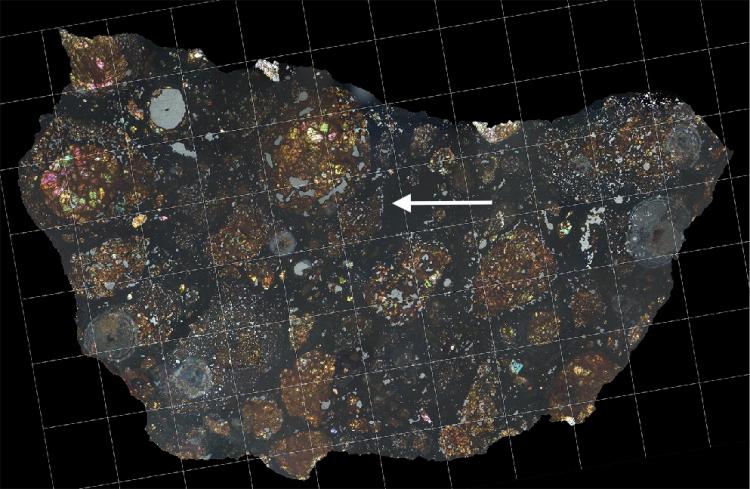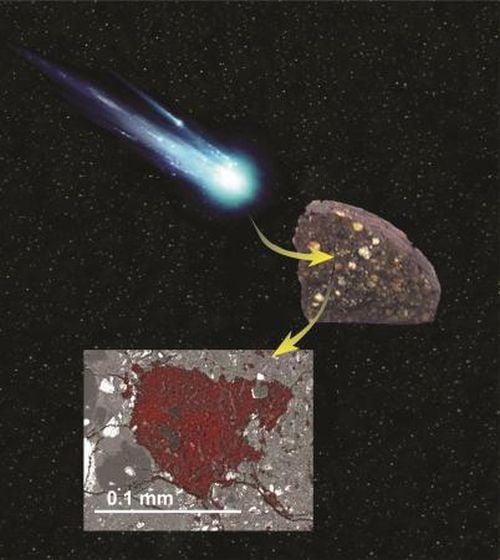The early days of the Solar System are hard to piece together from our vantage point, billions of years after it happened. Now a team of scientists have found a tiny chunk of an ancient comet inside an ancient meteorite. They say it sheds light on the early days of the Solar System when planets were still forming.
The new research detailing this discovery was published in Nature Astronomy and the lead author is Larry Nittler from the Carnegie Institution. It centers around an ancient meteorite called the LaPaz meteorite that was found in the LaPaz Icefield in Antarctica. It's a carbonaceous chondrite, some of the most primitive meteorites we know of. About 5% of observed meteorites are of this type.
Observed meteorites are different than what are called "found meteorites." Observed meteorites are seen by someone, or increasingly, by some automated observer, and are found and examined before they're subjected to much terrestrial weathering. They're in more of a pristine state than something that may have been on the surface of Earth for years, decades, or even longer. So they're desirable scientific objects.
The LaPaz meteorite is a 42 gram rock found by ANSMET, the Antarctic Search for Meteorites, in 2002. It's in almost pristine condition and hasn't been changed by weathering. Its official name is LaPaz IceField 02342.
Nittler and the team were studying the meteorite by slicing it thinly and subjecting it to sophisticated chemical and isotope analysis. Inside they found something unusual. There was some very primitive material that bore resemblance to ancient extraterrestrial dust grains that likely originated in comets that formed in the distant edges of the Solar System.
Asteroid grow gradually by accumulating more and more material. They're also busted apart by collisions, something that happened a lot more in the early days of the Solar System. About 3 to 3.5 billion years after the Solar System formed, while Earth was still in the process of becoming Earth, this tiny piece of comet, only about one tenth of a millimeter across, was captured by the asteroid.
Then at some point, the asteroid broke apart and LaPaz 02342 fell to Earth, with its tiny passenger protected from destruction as it fell through the atmosphere.
Their analysis showed that this tiny passenger likely came from the icy outer regions of the Solar System, the same place where the Kuiper Belt Objects are, and where many comets come from.
"Because this sample of cometary building block material was swallowed by an asteroid and preserved inside this meteorite, it was protected from the ravages of entering Earth's atmosphere," Nittler explained in a press release. "It gave us a peek at material that would not have survived to reach our planet's surface on its own, helping us to understand the early Solar System's chemistry."
The story behind this event helps shed light on the early Solar System formed. Carbonaceous chondrites like LaPaz 02342 formed in an area beyond Jupiter, while comets formed in the distant, icy reaches of the Solar System. Drag from surrounding gas caused the tiny comet particle to migrate from the distant Solar System to the area where carbonaceous chondrites form.
The existence of this tiny piece of rock trapped inside a meteorite shows how the structure of the early Solar System was shaped in the early days of Earth and the other planets.
Sources:
- Press Release: Cometary Surprise Found Inside Meteorite
- Research Paper: A cometary building block in a primitive asteroidal meteorite
- The Meteoritical Society: LaPaz 02342
 Universe Today
Universe Today


